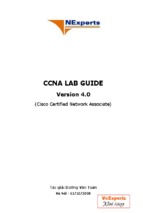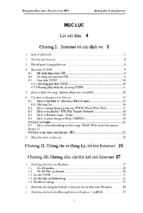THE NEW HANDSHAKE: Sales Meets Social Media (JOAN C. CURTIS AND BARBARA GIAMANCO)
THE NEW HANDSHAKE
This page intentionally left blank
THE NEW HANDSHAKE
Sales Meets Social Media
JOAN C. CURTIS AND BARBARA GIAMANCO
Copyright 2010 by Joan C. Curtis and Barbara Giamanco
All rights reserved. No part of this publication may be reproduced, stored in a
retrieval system, or transmitted, in any form or by any means, electronic,
mechanical, photocopying, recording, or otherwise, except for the inclusion of brief
quotations in a review, without prior permission in writing from the publisher.
Library of Congress Cataloging-in-Publication Data
Curtis, Joan C., 1950–
The new handshake : sales meets social media / Joan C. Curtis and Barbara
Giamanco.
p. cm.
Includes bibliographical references and index.
ISBN 978–0–313–38271–0 (hbk. : alk. paper) — ISBN 978–0–313–38272–7 (ebook)
1. Selling. 2. Social media. 3. Internet marketing. 4. Target marketing.
I. Giamanco, Barbara. II. Title.
HF5438.25.C87 2010
658.80 72—dc22
2010011354
ISBN: 978–0–313–38271–0
EISBN: 978–0–313–38272–7
14 13 12 11 10
1 2 3 4 5
This book is also available on the World Wide Web as an eBook.
Visit www.abc-clio.com for details.
Praeger
An Imprint of ABC-CLIO, LLC
ABC-CLIO, LLC
130 Cremona Drive, P.O. Box 1911
Santa Barbara, California 93116-1911
This book is printed on acid-free paper
Manufactured in the United States of America
Contents
Acknowledgments
vii
Introduction
ix
PART ONE: THE EVOLUTION OF SELLING AND BUYERS
1
Chapter 1: The Evolution of Sales
3
Chapter 2: The Evolution of Buyers and Online Communication
13
Chapter 3: The Wild, Wild West of Social Media
21
Chapter 4: What Are You Waiting For?
29
Chapter 5: Consultative Selling: Make New Friends but Keep the Old
43
Chapter 6: What Does Your Social Media Customer Look Like?
53
Chapter 7: Developing the Corporate Mindset
63
Chapter 8: Charting Your Course: The Three P’s: Purpose, Plan,
People
73
PART TWO: SOCIAL MEDIA OUTLETS—WHAT WORKS BEST
WHEN AND HOW TO BEGIN
87
Chapter 9: Sales Meets Facebook
89
Chapter 10: Sales Meets LinkedIn
97
vi
CONTENTS
Chapter 11: Sales Meets Twitter
109
Chapter 12: You Digg It, I’m Delicious, We All StumbleUpon
119
Chapter 13: The Blogosphere
127
Chapter 14: Netiquette
141
PART THREE: DEVELOPING A SOCIAL MEDIA SALES STRATEGY
155
Chapter 15: The First 15 Days of the 30-Day Social Media Sales
Challenge: What You Need to Do to Get Started Now
157
Chapter 16: Seeing the Finish Line: Meeting the 30-Day Social Media
Sales Challenge
171
Postscript: Accessibility and Customer Service—When Technology
Fails Us
181
Appendix: Resource Guide
183
Notes
187
Index
195
Acknowledgments
I would like to dedicate my part of this book to my mom, Isabelle O’Neal. She
is a woman who has never stopped learning. She taught me the value of
embracing everything new and not shying away from nor fearing risk. My
mom never met a “gadget” she didn’t love, whether it was a computer, a
hand-held device, or a bread maker. Even in her most senior years, she sends
me e-mails regularly. She embodies everything we talk about in The New
Handshake. Rather than let her mind atrophy, she is willing to take the risk
and try something new and different.
I would also like to thank my writing partner, Barb Giamanco. Barb worked
hard on this project and shared much of her knowledge of sales. She never
shied from a task and she delivered the goods whenever asked. Together we
made a formidable team. —J.C.
***
I will begin by acknowledging my writing partner in crime, Joan Curtis.
Without Joan’s book experience, writing guidance, and steady prodding to
hit our deadlines, seeing my name on the cover of a book might never have
happened. What was the flash of an initial idea is now a reality. Thanks, Joan!
Capturing the concepts buzzing around in my head and transforming
them into words that made business sense was not always easy. To R. Mark
Moore, I say “thank you, thank you, thank you for all the hours you spent listening to me talk it out!” I appreciate your patience, your calming support
viii
ACKNOWLEDGMENTS
when I felt out of my league as a writer, and your technical guidance and contributions to our project.
Finally, I want to acknowledge my mother, Arlene. My obsessive love of
reading and quest for knowledge is her fault! She believed that learning continued long past graduation day, and I am so glad that she instilled that
passion in me. Sadly, Mom passed away earlier this year and will never read
our book, but I know that she is proud of me for turning a longstanding personal goal into a physical reality. —B.G.
Introduction
Mark Cuban, billionaire entrepreneur and chairman of HDNet Television,
says, “In the Internet age, executives have to learn how to shape information
about themselves and their companies, or the Internet will do it for them,
and it won’t be pretty.”1
According to Scoble and Israel in Naked Conversations, we are facing a revolution in the way businesses and customers communicate.2 The authors
make a compelling case for how the blogosphere has changed the way businesses talk to one another, their customers, their partners, their vendors, their
employees, their investors, and the media. We will discuss the evolution of the
blog and the impact of blogging on sales in Chapter 13. Today’s businesses
face an even greater challenge than the blog, and that is the power of social
media. The sales and marketing components of business feel the impact of
this revolution more intensely than any other sector. A new trend in the way
companies are doing business is emerging. Companies must move quickly
to adapt to this next generation of sales, currently being dubbed Sales 2.0®.3
According to Axel Schultze, chief executive officer of Xeesm.com, “Whatever
sales approach used to work doesn’t work anymore. Scripts and canned
speeches about features and benefits fall on deaf ears. Sales need to be visible,
proactively engaged and patient.”4 Will you be ready to respond to the pace of
change?
The New Handshake offers an alternative to the traditional sales approach
and provides the tools and strategies for doing so. The premise of The New
x
INTRODUCTION
Handshake is that in the midst of this communication revolution sales must
adopt a new approach that incorporates social media. When we overturn the
old business practices, what emerges is something one person called “smarketing.” Sales and marketing no longer work as two separate entities. Instead,
they work in tandem. According to Anneke Seley, author of Sales 2.0, we are
experiencing a complete corporate cultural overhaul in which the lines of
sales and marketing are becoming more and more blurry. This is the essence
of The New Handshake: Sales Meets Social Media. Seley and Holloway made a
great case for the transition from Sales 1.0 to Sales 2.0 in their book, and they
discussed the need for corporate readiness before such a move can happen.
They introduced a wider use of the telephone and the Web for sales functions.
These steps paved the way for the next major step in the process: the social
media. In an October 23, 2009 blog post titled “What Is Social Selling,” Axel
Schultze said “social selling is a sales technique that leverages social media,
to get and maintain a 360 degree picture of the clients and their influencer
on an ongoing basis. It allows salespeople to manage and maintain five times
as many active customers compared to traditional techniques.”5
In any organization, sales keep the engine humming. Without sales, company operations will grind slowly to a halt and eventually stop completely. The
New Handshake represents an emergence of a sales approach that blends consultative selling and relationship selling with the use of technology and social
media tools. By consultative selling we mean selling that consults with customers to uncover customer needs. By relationship selling we mean creating
a strong relationship before pushing products onto customers. Relationship
selling characterizes business-to-business (B2B) selling. In the past, sales
pushed products onto customers under the assumption that the company
knew more about what was good for them than they did. The move toward
more consultative selling emerged in the late 1970s. Combining consultative
selling with the tools of the social media creates a new evolution in sales that
began with Sales 2.0. That evolution in sales is driven by a new set of buyers.
Most people now refer to an evolution in buying versus an evolution in sales.
As buyers change the way they purchase, sales must respond with practices
that meet those buying needs.
As with any major change, people tend to overreact. The overreaction takes
two forms: they toss out everything that smacks of the past or they ignore the
new trends and label them as passing fads. For companies to succeed in this
new sales environment, however, business leaders must recognize that it will
require much more than simply updating existing customer relationship
management (CRM) systems. Slapping new technology onto outdated processes and mindsets simply gets you more of the same lackluster results. As
Seley and Holloway point out, Sales 2.0 requires a cultural shift.
INTRODUCTION
xi
Fifty years ago a salesperson probably had five customer interactions a
week. That same salesperson 10 years ago increased individual customer interactions to 50 or more. Today, with the introduction of the social media, a salesperson could interact with a customer 50 times a day—and some people might
consider that a conservative number. We now have communication tools that
are flexible enough for immediate response and interaction. According to
Shirky in Here Comes Everybody, “we are in the middle of a remarkable increase
in our ability to share, to cooperate with one another and to take collective
action, all outside the framework of traditional institutions and organizations.”6
There is no reason to believe that these communication tools cannot be used to
generate sales.
How have people selected products to buy over the centuries? The most
effective means for buying has always been by word-of-mouth. Imagine Person A has 12,000 followers on Twitter. Imagine that person finding your product so valuable he Tweets about it to his 12,000 followers. Now, imagine
Person B reads that Tweet and decides to “ReTweet” it to her 8,000 followers.
Person C sees Person B’s Tweet and Tweets about your product to his 10,000
followers and so on. This is word-of-mouth at its best. These thousands of people got exposure to your product, and it cost you nothing! Word-of-mouth and
engagement have always been the most effective ways to sell products. Today,
the social media offer tools that mimic word of mouth on steroids. What an
opportunity for sales! Before you get too excited, though, we must examine
the best way to employ these tools. Much depends on your product, your customer, and your orientation to Sales 2.0.
President Barack Obama did more than make history as the first AfricanAmerican president. He showed us how to combine the old handshake with
the social media. He created a new handshake in the world of politics. The
Obama presidential team integrated social media with all forms of media to
achieve success. They recognized that the old-fashioned form of politics
would not put Barack Obama in the White House. They also recognized the
potential of the social media. Taking a huge risk, they enlisted the help of
experts in the new world of social communication. There they created an
army of supporters with over 13 million people on an e-mail list as well as
5 million people connected as friends on social network sites, including 3 million on Facebook alone.7 Barack Obama traveled the country, shook hands,
made speeches, and cultivated donors. Combining these tried-and-true
methods with the new methods of communication, his team built a following
never before seen on the political scene. John McCain called his opponent a
rock star. Obama became a rock star because his communication methods
produced crowds of rock-star proportions. He recognized the need to combine
the old handshake with the new handshake, and he did so with a strategy.
xii
INTRODUCTION
The Obama team did not just say, “Hey, we need to start using social media.”
Instead, they decided what they wanted from the social networks and how
they would communicate within those networks. They recognized that people
getting excited online was not enough to win a national election. The results
of the 2008 Obama campaign shifted the communication dynamic for all
political campaigns in the future. Obama created an evolution in political
interaction the way The New Handshake will do for sales. The lessons learned
from the Obama campaign are lessons we can apply within the realm of sales.
David Plouffe, Obama’s chief campaign manager, described the strategy
his team used as follows:
1. Be consistent in everything you do. Your core message must stay
the same. Use the power of the people to deliver your messages.
2. Repetition in all kinds of media outlets creates power for your
brand, but you must maintain control of your brand.
3. Diversify your media strategy to get to your audience. Find your audience and determine the best way to reach it. Incorporate the communication tools that touch your audience. The Obama team used
conventional advertising, texting, Facebook, MySpace, and e-mail Listserves. Use every tool out there that will help you reach your audience. Recognize that some people never read newspapers and others never see
Facebook.
4. Do not be afraid to innovate and take some risks.
5. Learn the profile of your current customers. Empower them to keep
you informed about what works and what does not work.
6. Be authentic!
7. Embrace the new technology as it emerges but do not let the new
technology take you away from your task. Plouffe, said, “Technology
must meet your core objectives.”
The New Handshake will show companies and salespeople how to adopt
what the Obama team learned. We will help you design a more proactive, creative approach to reaching new customer markets and to creating sales opportunities where none existed before. The New Handshake will demonstrate how
innovative uses of the social media will create a word-of-mouth form of selling
that will erase geographical boundaries. Social media have allowed people to
go back to building communities on a much larger scale, making the world
smaller in the process. This new emergence of sales will include a change in
the way people approach the sales process. Sales 2.0 salespeople will recognize that the new handshake combines a consultative selling approach with
the effective use of the right social media tools to support the process. This
INTRODUCTION
xiii
book presents a strategic approach to social media and the tools to create a
Social Media Sales Strategy.
Consultative selling is not new, but often salespeople prefer to take orders
and make accidental sales rather than reach out proactively, especially during
a prosperous, growth economy. This book will demonstrate how progressive
companies embrace consultative selling in both the good and bad economic
times and how the integration of the right social media makes that happen.
The companies we highlight will demonstrate how technology with the
proper orientation and training produces results. This book will help you
determine the purpose for employing the social media within your organization and the plan for doing so, and guide you to support the people who will
implement the technology. The New Handshake includes more than tooting
the newest, whiz bang technology; it means reaching out in a way that makes
sense to your business and finding the tool that best fits your needs and the
people you serve.
WHY READ THIS BOOK?
The New Handshake aims to do more than make a case for Sales 2.0 and the
use of social media. You can read many excellent books that tell you it is time
to jump on the social media train. In fact, a plethora of books enter the market
each year dealing with the impact of the Internet on the way we communicate.
Many discuss the challenges presented by today’s information overflow.
Research and statistics agree that communication is exploding in ways never
before imagined. People are hungry for information about how to keep up
with the changes. An area most affected by these changes is the manner in
which we market our products and services to potential buyers. We will discuss how the buyer and seller relationship has changed and how the relationship between sales and marketing has changed. Furthermore, we intend to
give you a road map for developing a Social Media Sales Strategy that focuses
on relationships by using a cacophony of tools, including online blogging,
social bookmarking, and social networks. This is what you can get from reading this book:
1. A clear understanding of the impact the social media are having on
communication in the marketplace.
2. Examples of how companies adjusted to these communication
changes and are in the process of adapting strategies within their
cultures.
3. A road map for creating a Social Media Sales Strategy for your
company.
xiv
INTRODUCTION
4. A step-by-step description the major social media players, including
LinkedIn, Facebook, and Twitter, with an indication of which works
best depending on your sales focus (B2B or B2C).
5. A primer for using social bookmarking, social aggregators, and
other add-ons in the realm of social media.
6. Guidelines for entering the social media without offending.
7. A new and wider understanding of the power of these communication tools in your industry.
8. A 30-day Social Media Sales plan, given your company culture and
its social media readiness, for implementing change within your
organization.
Essentially The New Handshake takes what has always worked in solid effective sales and adapts those skills and strategies to the new playing field—
online, social communication outlets.
Chapters 1 through 6 explain the power of the communication revolution
and how that has sparked an evolution in sales. If we look around over the last
30 years, nothing has changed as drastically as the way we communicate. Our
refrigerators have evolved to sub-zero, our washing machines look more high
tech, and our microwaves function much as they have for the last 30 years.
Think back just 10 years and look at the vast changes in the way we communicate. Dial-up Internet services are obsolete. Fax machines are dying. Handheld devices no longer serve merely as telephones. The explosive changes in
communication continue to astound us. To stay ahead of the game, we must
be ever diligent. In these first chapters we will explore how other companies
are responding to these changes; we will show the pros and cons for revamping, redefining, and integrating your sales and marketing strategy. We will
encourage you to dispel your fears and the barriers that prevent you from taking the risk of embarking on a social media strategy. These chapters will give
you an historical perspective of sales and buying behavior. We will make a case
for moving forward by looking back at what has worked in the past. Combining what we know works with the new tools that today’s technology offer will
propel you into the next generation of sales and marketing.
Chapters 7 and 8 exemplify what you must do to take a practical look at
your own company, its culture, goals, and customers. This analysis enables
you to examine the social media tools that fit best. We will illustrate the use
of social media and sales with examples from companies currently experimenting with the new handshake. You can adapt what they have done to your
organization.
Chapters 9 through 12 introduce you to the major social media players. You
will meet Facebook, LinkedIn, and Twitter, and you will get clear-cut examples
on how to set up your profile and begin putting each application to work for
INTRODUCTION
xv
you. In Chapter 12 you will learn about Digg, Delicious, and StumbleUpon as
well as other bookmarking and aggregating resources to help you accelerate
your sales processes. By the time you finish these chapters, you will have the
basic information you need to launch your sales operation into the world of
social media.
Chapter 13 tells you everything you need to know about blogging and how
blogging fits within a Social Media Sales Strategy.
Chapter 14 answers your questions about what is appropriate and what is
not within the social media platforms. Whether you are communicating on
Twitter, Facebook, or LinkedIn, you will quickly discover the unwritten rules
of engagement. This chapter will help you avoid stepping on landmines.
Chapters 15 and 16 challenge you to launch your own Social Media Sales
Strategy. Using an example from a typical medium-sized business from the
point of view of a sales rep, we will walk you through a step-by-step 30-day Social
Media Sales Challenge. By the time you finish Chapter 16 you will be ready to
design and implement a sales strategy for your organization. You will be ready
to take that all-important step into the realm of social communication.
This page intentionally left blank
Part One
THE EVOLUTION OF SELLING
AND BUYERS
This page intentionally left blank
Chapter 1
The Evolution of Sales
What prompts you to purchase a product? What does it take for you to hit the
purchase button on your computer? The psychology of sales has mystified
companies for centuries. Before we take a look at how the social media have
turned sales upside down, it helps to examine the evolution of the machine
that currently drives the worldwide, billion-dollar sales industry.
A sale, simply defined, means the transfer of goods for cash or credit. How
that transfer occurs has continued to evolve since the day when the vendors
showcased their wares in the market square or rolled their carts into the next
prairie town. When you offer something “for sale,” you are letting people
know that you have something available for purchase. Transactional sales
characterized early sales methods, and marketing was limited to the local
geography. Buyers did not have many choices. Today’s buyers face an infinite
number of choices available to them due to the explosion of the world of all
things digital. “The foundation of the entire shift in sales is in the consumer
education process,” said Axel Schultze, chief executive officer (CEO) of
Xeesm.1 If your business strategy does not reflect an alignment with this
changing world, you may find your salespeople locked out.
THE EARLY DAYS
The late nineteenth century and early twentieth century gave birth to sales
as we know it today. In Birth of a Salesman, Walter Friedman traced the history
- Xem thêm -





















